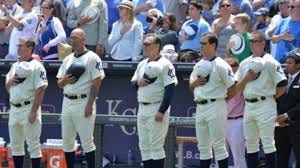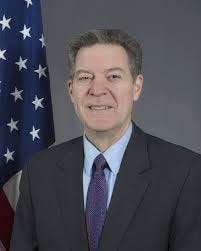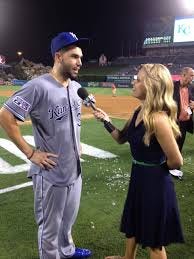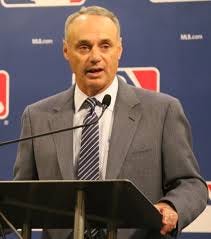Preseason sports predictions are a media tradition despite the fact that generally speaking the media sucks at predicting the future and if you want some hard evidence, just look at the past.
In 2013 ESPN asks a panel of experts to predict the American League Champion, the National League Champion and the eventual World Series Champion. Not one of the experts gets it right.
In 2014 ESPN asks a panel of experts to predict the American League Champion, the National League Champion and the eventual World Series Champion. Not one of the experts gets it right.
Despite a lousy fortune-telling track record it’s predicted that the 2015 Royals will win just 79 games and finish third in the American League Central.
Y’know…
I’ve read all 27 Amendments to the U.S. Constitution and not one of them requires the media to make preseason predictions, but we still do it every year and if you won’t participate in those predictions you’re considered a wet blanket or worse.
When I express a reluctance to make predictions I’m told not to worry; nobody will remember what I said.
The Kansas City Star requires me to do a live online “chat” about the Royals and fans keep asking me to make predictions and I keep saying “I don’t know” and one fan gets pissed off and says what’s the point of doing this chat if you won’t answer questions and I say I will answer questions if people stop asking me to predict the future.
I could tell those fans about the Royals outfield positioning philosophy or bullpen construction or why they like swinging at the first pitch so much, but nobody asks about those things; they want predictions.
It’s hard enough to know what has happened and nobody knows for sure what will happen so what’s the point in making inaccurate predictions that are mostly uninformed guesswork and that’s just the kind of logical response that will piss off fans and eventually get you fired.
My refusal to predict the future seems unreasonable when so many other media members are happy to give it a shot.
Anyway…
The “experts” have decided that the key to winning baseball games is walks and home runs, so 2014 has to be a fluke because the Royals finished last in both categories. (I guess the “experts” could have questioned their assumptions about how you win ballgames, but chose not to do that.) So if 2014 is a fluke, no way on God’s previously green, but rapidly turning brown Earth it can happen again the very next season and the “experts” assure everybody that in 2015 the Royals will go right back to being mediocre.
In the early days of baseball, scientists who didn’t play much baseball assured everyone that there was no such thing as a curveball, it just wasn’t possible, which didn’t stop unenlightened pitchers from throwing curveballs or gullible hitters from swinging at them and missing them.
In the phenomenal book The Experts Speak (which should be required reading before anybody offers an opinion about anything) the authors reveal that at one point or another scientists believed:
Gravity wasn’t real.
Meteors didn’t exist.
People lived on the sun.
Cloning was impossible.
The brain was an organ of minor importance.
And those are just the scientists that work in the Trump Administration.
(OK, that was one of those updated jokes I warned you about when we started. Back in 2015 I had no idea we’d be dumb enough to elect a reality show host president and since the Democrats can’t get their shit together and run a reasonable alternative, do it again eight years later.)
People (and that includes scientists and journalists) are wrong all the time and the further and/or farther into the future they make predictions, the wronger they’re likely to be and the last part of this sentence does a good job proving it.
Nevertheless…
Despite the “experts” predictions that the team is definitely, absolutely, positively going to be mediocre, the Kansas City Royals decide to play the 2015 season anyway.
Some people never learn.
The Coaching Staff
There is endless speculation about the possible effects of off-season acquisitions like Kendrys Morales, Edinson Volquez and Alex Rios, but not nearly as much talk about one of the Royals most intriguing off-season moves: keeping their entire coaching staff.
Which is a sign that despite the experts disapproval, the Royals are happy with the direction things are going and also means the 2015 players can hit the ground running because they don’t have to adjust to a new coach or new coaching philosophies; despite the experts assurances that they have no chance and 2014 was a regrettable aberration, the Royals believe things are headed in the right direction.
The Middle Relievers
In some moves that get hardly any attention, in the off-season Dayton Moore signs Ryan Madson ($850,000), Joe Blanton (minor league deal) and Chris Young ($675,000) to improve middle relief.
Hardly anybody notices.
The Governor of Kansas
Over the winter Kansas Governor Sam Brownback defends his “bold” tax policies by saying: “I’m the sort of guy who would have sent Alex Gordon from third base.”
Brownback’s tax policies (cutting taxes, which will theoretically turn into economic growth and new jobs, an idea which hasn’t worked anywhere it’s been tried) actually result in monthly revenue for state government taking a nosedive, nine rounds of budget cuts, three credit downgrades, missed state payments and what The Atlantic magazine calls an “ongoing atmosphere of fiscal crisis.”
Apparently Sam Brownback is the sort of guy who would have gotten Alex Gordon thrown out by 30 feet.
The Opening Day Starter
Heading into spring training the Royals starting rotation appears to be Jason Vargas, Jeremy Guthrie, Edinson Volquez, Danny Duffy and Yordano Ventura. Ventura has the best stuff on the staff so a lot of people think Yordano should get the Opening Day start.
But Yordano is just 23 years old, has pitched in only 34 regular season games and after a bad outing in the 2014 Wild Card Game broke down and cried. He was so despondent he texted Rene Francisco, the Royals’ vice president for international operations: “Please tell them not to lose confidence in me.”
So what’s all those soap opera plot lines have to do with being the Opening Day starter?
Number One pitchers face the opposing team’s Number One pitcher on Opening Day and until rainouts and days off throw pitching rotations out of whack, the Opening Day starter will match up against the best pitcher on the other teams, which means an Opening Day starter can pitch his ass off and still go 1-and-3.
Do you give Yordano an easier spot in the rotation and let him gain confidence or pitch him on Opening Day and tell the world he’s your Number One guy?
And if you don’t give him the Opening Day start and tell the world he’s your Number One guy, you’re saying Yordano’s not ready for that role and what will that do to his confidence?
Questions like these explain why many Big League managers have drinking problems.
Marshawn Lynch and the Media
In November of 2014 NFL player Marshawn Lynch gets fined $100,000 for avoiding the media. Players know they have to speak to the media even when they don’t want to so they resort to harmless (and boring) clichés that won’t get them in trouble.
Players don’t speak in clichés because they’re dumb; players speak in clichés because they’re smart.
From the very start Eric Hosmer is great at dealing with the media and effortlessly stringing clichés together—“That’s a good team over there” or “We played hard for 27 outs”—and Eric’s willingness to talk every night takes a lot of pressure off his teammates who would rather not have to deal with us.
When I meet Hosmer’s father I tell him he did a good job raising his son and add: “Eric can talk for 20 minutes and not say a goddamn thing.”
Hosmer’s dad bursts out laughing and says: “Well, I told him to keep it vanilla.”
But in my experience if you ask a good question you can get a good answer, but ask a shallow question: “How did it feel to hit a walk-off homer?” And you’ll get a shallow answer: “It felt great to come through for the fans and my teammates.”
I know the key to good answers—at least in theory—but still ask the occasional bad question and when I’m talking to Hos about a play at first base he starts laughing, tells me my questions are terrible and adds: “C’mon, Lee, you’re so much better than this.”
Apparently I’m not.
Spring Training Numbers
So we’re headed into spring training and at this time of year if you’ve already made your inaccurate preseason predictions there’s nothing else to write about, so the media exaggerates the importance of spring training statistics. For players trying to make the team the spring numbers might matter, but for players like Eric Hosmer and Mike Moustakas and Salvador Perez they’ll make the team unless they get hit by a bus.
And it would have to be a very large bus.
After someone tells me I should ask about it, a trainer admits that some players who play winter ball don’t feel the need for six more weeks of baseball and will tend to have an annual spring training injury.
I ask what kind of injury and the trainer says anything we can’t X-Ray; hamstrings are popular. The “injured” player will miraculously recover a couple weeks before Opening Day.
Back in the old days when ballplayers had offseason jobs because management refused to give them a fair share of their obscene profits, a ballplayer might need six weeks to get in shape. These days players stay in shape and only need a couple weeks to get their timing back (as always, pitchers are different) and it’s the teams that need six weeks of spring training to sell tickets.
In spring training nobody’s lost a game that matters, so convince the fans this might be your year and get them to buy tickets before they realize this year is probably going to be just as awful as last year.
Baseball Starts to Panic
So now—with the notable exception of the Royals—pretty much everyone’s playing Moneyball and trying to work walks or hit home runs.
And because hitters are taking pitches and ignoring ones they can’t hit out of the park, games are slowing down: in 1981 the average game took two hours and 33 minutes, by 2014 it’s three hours and two minutes.
The national attention span is dropping like a well-thrown anvil and attendance is dropping along with it, so MLB and the Player’s Union agree to speed things up by mandating that managers stay in the dugout during replay reviews and hitters keep one foot in the batter’s box, but decide not to implement a pitch clock.
Rusty Kuntz describes the mental torture of playing behind a pitcher who works slowly:
“They throw a ball…”
“Then they walk off the mound…”
“Then they adjust their cap…”
“Then they catch the ball…”
“Then they rub up the ball…”
“Then they walk around the mound…”
“Then they walk up the back of the mound…”
“Then they stare in…”
“Then they get the sign…”
“Then they do a big, slow windup…”
“Then they deliver the pitch…”
“Ball two.”
Baseball is getting desperate, but not yet desperate enough to require pitch clocks, that’ll come eight years later.
Framing Reports
The Grantland website posts a story by a contributor named Ben Lindbergh who was a big analytics guy, but then served as an intern for the New York Yankees and wrote:
“It was my first day as a baseball operations intern, and my last day as a catcher defense doubter.”
Analytics advocates tend to think offense is more important because they don’t really know how to measure defense (it’s much easier to measure things that do happen than things that don’t happen), but after working with the Yankees, Lindbergh starts to question WAR (Wins Above Replacement) which claims to be an “all-inclusive” metric measuring a player’s worth, but clearly misses some things.
You can win games by putting runs on the board or keeping runs off the board which seems pretty obvious, but still gets ignored.
Once baseball could track pitches (at least theoretically and the accuracy of that is also highly questionable) they could identify catchers who were turning balls into strikes and strikes into balls and suddenly Brad Ausmus looks like a much better catcher.
On the other hand…
Don Wakamatsu—a former catcher—tells me not to take those framing reports all that seriously:
“If Miguel Cabrera turns around and glares at a rookie umpire for calling a borderline pitch a strike, do you think that pitch will be a strike after that? Will a rookie umpire ring up David Ortiz on a 3-2 pitch if the game’s in Fenway?”
Umpires are human (at least that’s the rumor) and have human reactions that affect the numbers and just because someone has a number that they believe “proves” something, it might not be so. Withholding judgement is the right call in many situations, but most of us aren’t willing to do that.
Hell, I make a good living not withholding judgement.
Infield Shifts
According to the Sacramento Bee and the poor dope that had to count them: “Major league teams employed infield shifts more than 13,000 times in 2014—a 440-percent rise over their usage just four years ago.”
In reality baseball has always used shifts—they were used against Ted Williams—but now we’re talking about dramatic shifts that include three-out-of-four infielders, the occasional outfielder and any beer vendors that brought a glove to the game and the shifts are getting used a lot.
In 2014 when they start using shifts against left-handed batter Mike Moustakas I ask Moose if he’s going to try bunting or hitting the ball to the opposite field and Moose says no, he’s going though and over the shifts—and hits .212 that season.
The shifts are working.
Despite the fact that baseball highlight shows are mostly defensive plays, baseball still wants more offense, but in 2014 batting average, on-base percentage and slugging percentage are down and new commissioner Rob Manfred says he’s open to outlawing shifts which pisses off some of the old-school ballplayers.
Here’s what great about baseball—and every other sport—and Manfred (a lawyer) doesn’t seem to get it:
Someone figures out how to stop you from doing what you want to do and then you have to figure out how to stop them from stopping you and next they have to figure out how to stop you from stopping them…OK, I assume you get the picture…and all that back-and-forth adjusting advances and changes the sport.
Someone steals 100 bases; some pitcher figures out a slide step.
Infielders drop a knee in the base path to block runners from reaching a base with head-first slides; runners start sliding in feet first and spiking infielders.
Hitters want to lift the ball and hit home runs; pitchers start throwing high fastballs that those uppercut swings tend to miss or pop up.
If teams are going to shift, the correct response is for hitters to work on bunting or hitting the ball to the opposite field because as Ned Yost says, if someone bunts against a shift twice, he’ll stop shifting him.
So what’s the problem?
Some coaches defend the hitters and say some of them just can’t learn to bunt or hit the ball the other way—it’s just not in their DNA—but as is so often the case, Jason Kendall calls bullshit. Practicing bunting is boring and kids want to hit homers in BP, not opposite-field grounders because hitting a ball a long long way is how they got drafted and they didn’t spend much time learning the basics and would rather not have to.
And now Rob Manfred is saying don’t worry, we won’t make you practice anything you don’t find fun, we’ll just tell those nasty old infielders they can’t gang up on you.
In 2015 baseball appears to be headed in the wrong direction, but the old-school players and coaches still have hope; the Kansas City Royals are zigging while the rest of the league zags.











Thank you for reminding us of an amazing Royal's 15' season. My heart sinks every time I see Ventura's name, too sad. I'm struggling with this seasons U turn. My husband said there's a lot of season left, but tough to come back when you're in the losing mode.
Could it be that hitters avoided hitting the ball the other way because it took away their power? Power is where the $ is.